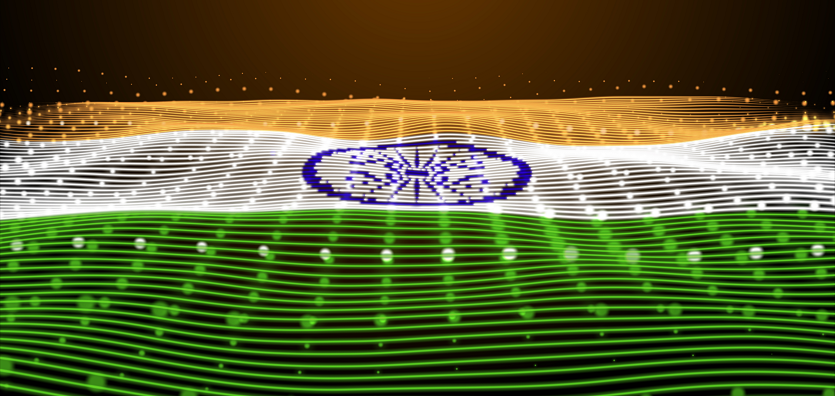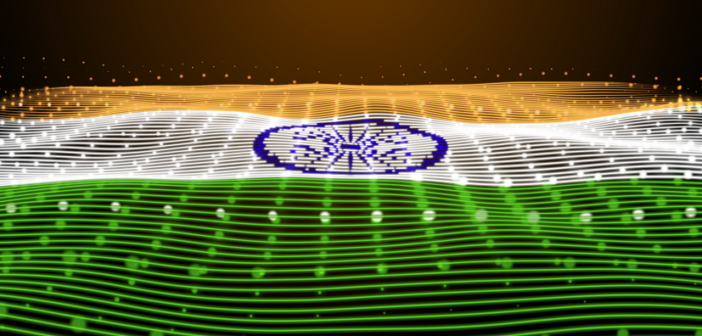
 In a stern message to China, without naming the country whose troops are now firmly entrenched deep inside Indian territory after viciously lynching 20 of our redoubtable armymen, Prime Minister Narendra Modi warned on Monday that “those who cast an evil eye on Indian soil” had received a befitting reply.
In a stern message to China, without naming the country whose troops are now firmly entrenched deep inside Indian territory after viciously lynching 20 of our redoubtable armymen, Prime Minister Narendra Modi warned on Monday that “those who cast an evil eye on Indian soil” had received a befitting reply.
As people in India hailed this lofty declaration as an intent of a swift military retribution that would send the Chinese scurrying back across the borders, the government quickly followed up by banning 59 apps (or applications) originating from China. These included the trending ones like TikTok, a video-sharing social networking platform of Beijing-based internet technology company ByteDance, UC Browser, a web browser developed by UCWeb, a subsidiary of Hangzhou-based Alibaba Group, Lenovo SHAREit, that allows Windows, Android and iOS devices to transfer files directly by ad-hoc Wi-Fi connections, and CamScanner, developed by Shanghai-based Intsig Information Co. Ltd for allowing iOS and Android devices to be used as image scanners.
The Prime Minister himself exited from the microblogging website, Weibo, launched by Beijing-based Sina Corporation in 2009 and which he had joined a few years ago. On Wednesday, his account went blank after his profile photo, posts and comments were removed from the handle.
The Indian public, however, soon realised that the Prime Minister was possibly hinting at another adversary, because he had chosen not to identify it by name, and especially because he had, on 19 June, four days after the brutal killing of our valiant soldiers, maintained that “no intruder is present inside India’s borders, nor is any post under anyone’s custody”. Some felt that his threat was of a more general nature, to signal to the international community that India would not hesitate to overwhelm any country that was ill-disposed towards it.
The ban on the Chinese apps was enforced under Section 69A of the Information Technology Act of 2000 that stipulates: “Where the Central Government or any of its officers specially authorised by it… is satisfied that it is necessary or expedient so to do, in the interest of sovereignty and integrity of India, defence of India, security of the State, friendly relations with foreign States or public order or for preventing incitement to the commission of any cognisable offence relating to above, it may… by order, direct any agency of the Government or intermediary to block for access by the public or cause to be blocked for access by the public any information generated, transmitted, received, stored or hosted in any computer resource.”
Though Beijing was highly encouraged – and, possibly, as astounded – by Modi’s statement, of no intrusion, that appeared to support it, it was also outraged by its apps being banned by India. In its report on the Prime Minister’s testimonial, denying any intrusion, in its 21 June edition, Global Times, the English-language tabloid of the Chinese Communist Party mouthpiece People’s Daily, reported, “Chinese observers said Modi is trying to respond to the nationalists and hardliners with tough talk, but he understands his country cannot have further conflict with China, so he is also making an effort to cool tensions.”
China is currently pursuing bilateral military-level “disengagement” talks over its hostilities with India since April in eastern Ladakh, but announced that it was “seriously concerned” about the blocking of the 59 apps of Chinese companies. A statement issued by Ji Rong, a spokesperson at the Chinese embassy in New Delhi, termed India’s move “discriminatory”, adding that it “runs against fair and transparent practices”. Maintaining that India’s measure selectively and discriminatorily aims at certain Chinese apps on ambiguous and far-fetched grounds, the statement went on to claim, “It also goes against the general trend of international trade and e-commerce, and is not conducive to consumer interests and the market competition in India.”
With reference to the People’s Liberation Army’s (PLA’s) widely reported transgressions across the Line of Actual Control (LAC) that divides the two neighbours in this vast strategically-located high-altitude desert, the Indian social media gave its own spin to the controversy: “They changed our map, we banned their app.”
There are reports that concerned by the developments at its frontiers, India, the second largest importer of arms in the world after Saudi Arabia, is seeking faster deliveries of crucial weaponry it has on order with various countries. Dassault Aviation, with which Modi had signed a €7.87 billion deal for 36 Rafale fighterplanes for the Indian Air Force (IAF) during his 2015 state visit to France, is likely to deliver the first batch of four to six of these fighters by the end of July, when the original delivery schedule was for all the 36 to arrive in India by April 2022.
Modi’s deal had implicitly annulled a past agreement between the previous Congress Party-led government and Dassault for 126 Rafales for a much cheaper price, and which the IAF had urgently required. The truncated agreement for the 36 warplanes has been a major setback for the air force, which is already hamstrung by a depleting fleet and is anticipated to diminish to just 26 squadrons of serviceable aircraft over the next two years against a sanctioned strength of 45. The inductions it requires have been pushed back inordinately, with a Request For Information for an additional 114 jetfighters initially worth $18 billion being floated only in April 2019.
India has similarly urged Israel and Russia to step up deliveries of the military equipment they were to supply. However, the prolonged standoff with China cannot be hoped to be resolved with the procurement of these armaments, as their acquisition cannot be instantaneous, they would need to be integrated methodically and our forces would need to be trained on their operation.
The IAF’s shortcomings had been highlighted by none other than then Air Chief Marshal B.S. Dhanoa who weeks after India launched airstrikes on 26 February 2019 against Pakistani terror camps in Balakot, just beyond Pakistan-occupied Kashmir (PoK), had disclosed that the outcome of the confrontation would have been different had Wing Commander Abhinandan Varthaman, who downed an enemy jet during a dogfight but was himself captured, been flying a Rafale instead of a MiG 21 fighter plane. India’s aerial assault was to avenge the Jaish-e-Mohammed terror attack that had slain 40 CRPF jawans in Pulwama 12 days earlier.
Dhanoa’s warning seems all too true when one considers that within the first two days of the skirmish, the IAF lost a MiG-21 to Pakistani fire, though Pakistan also lost one F-16. Besides, not only was Varthaman apprehended by Pakistan, though later released, 100 km away from the dogfight, a Mi-17 helicopter of the IAF was shot down in friendly fire, killing six service personnel and one civilian on the ground.
A similar comment on our war preparedness had been made in 2018 by Rashtriya Swayamsevak Sangh (RSS) chief Mohan Bhagwat, who had affirmed that the RSS – the ideological mentor of the ruling right-wing Bharatiya Janata Party (BJP), can raise a force and get battle-ready in just three days even as the Army would need “six to seven months” for the same task. He added that while the RSS was not a military organisation, it had military discipline.
India’s military doctrine urges preparedness for hostilities from both sides of its frontiers, from China and from Pakistan. With an acquired superiority against Pakistan, India can use its arms as much in defence as in an offensive. Vis-à-vis China, India’s armed forces may be equipped enough to perform a defensive role at best, while initiation of a military raid against that country would be inexpedient.
If the Chinese bide time until winter on the issue of disengagement, it may be increasingly difficult to dislodge their present fortifications and encampments, and dissuade them from making further inroads into the strategic heights along Fingers 4 to 8 to the north of Pangong Tso and from carrying out their claims to the entire Galwan Valley.
It may be recalled that China had built a road up to 5 km on the Indian side of the LAC in 1999, while India was trying to dislodge Pakistani troops who had intruded into Kargil, during the BJP-led Vajpayee regime. As with the 1993, 1996 and 2013 border agreements with China, India had a similar pact with Pakistan that troops from both sides along the Line of Control (LoC) would vacate their posts before winter, when heavy snowfall cut them off from the rest of the world. In 1999, the Pakistan Army took advantage of this understanding by venturing upto 10 km into the Indian side between Zojila and Leh and occupying 130 winter-vacated Indian posts.
Indians have, however, been looking to the government acting on its intent. Soon after the abrogation of Article 370 and 35A of the Constitution that ended special status for Jammu and Kashmir (J&K) last August, Union Home Minister Amit Shah had told Parliament: “Kashmir is an integral part of India. I want to make it absolutely clear that every single time we say Jammu and Kashmir, it includes PoK, including Gilgit-Baltistan, as well as Aksai Chin. Let there be no doubt over it. Entire Jammu and Kashmir is an integral part of the Union of India.”
While Pakistan-occupied Kashmir, as the name suggests, is under Pakistani occupation, the around 38,000 sq km Aksai Chin that India still claims as part of the Union Territory of Ladakh had been annexed by China in its lone full-fledged war with India that lasted a month in 1962. Shah reiterated that PoK and Aksai Chin are part of India and BJP leaders would sacrifice their lives for the region.
Such declarations have fired the nationalism of many in India who are confident that the present leadership will overpower all external aggressors to recover lost territories. But there is also a widening perception that the government appears far more willing, and more disposed, to act against its own people back home, while denying there is danger at our borders. Brutalities unleashed and FIRs filed against dissenters, either among institutions, academia, the opposition or in the media and social media, against peaceful protestors during the nationwide campaign against the communally discriminatory Citizenship Amendment Act (CAA), against frightened migrant workers during the Covid-induced lockdown, against vulnerable minorities, and on imagined charges of ‘sedition’ and ‘anti-nationalism’ have become the norm.
People do ask why they are being crushed so readily, when a powerful enemy that intrudes at will, captures our land, and lynches our young valiant soldiers who leave behind grieving families and children is not so much as named by the head of government. People in India are greatly concerned, because they do not wish for the country to lose any bit of its land, a land 20 of our brave soldiers sacrificed their lives for.






